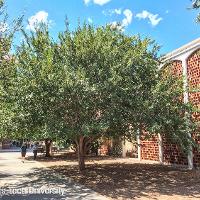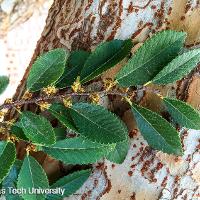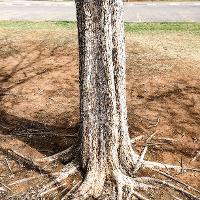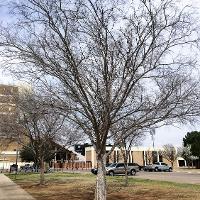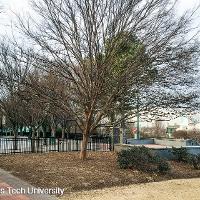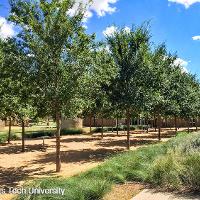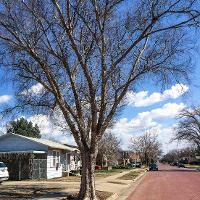Lacebark Elm
Ulmus parvifolia
Deciduous-Trees
(Detailed plant information can be found at the bottom of the page.)
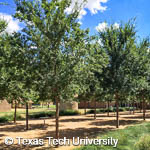
Ulmus parvifolia Photo Gallery
Ulmus parvifolia Plant Information
| Classification | |
|---|---|
| Scientific Name: | Ulmus parvifolia |
| Common Name: | lacebark elm |
| Family: | Ulmaceae |
| Suggested Uses: | specimen tree, large shade tree, park, golf course |
| Characteristics | |
| Plant Form: | large tree, vase shape |
| Height: | 40 - 50 feet tall |
| Spread: | 40 - 50 feet wide |
| Foliage: | alternate, deciduous, and serrated with inequilateral base generally 2 - 3 inches in length and 1 inch or less in width smaller when compared to U. pumila |
| Flower: | inconspicuous |
| Bloom Period: | late Summer or early Fall |
| Fruit: | samara in late Summer or early Fall |
| Bark: | mottled and exfoliating in cinnamon, gray, green, orange, and brown colors |
| Environment | |
| Water: | drought-tolerant, but will tolerate moist sites |
| USDA Zone: | zones 4 - 9 |
| Care | |
| Maintenance: | can be messy with lots of fruit fibrous rooted and fast growing seedling growth near tree is common |
| Pests & Pathology: | resistant to Dutch elm disease |
| Additional Notes: | excellent tree for many situations, particularly as a city tree has a small, pointed vegetative bud often confused with U. pumila (which has a black, rounded vegetative bud) several cultivars (‘Allee’, ‘Athena’, ‘Bosque’) are available |
TTU Plant Resources
-
Address
Texas Tech University, Department of Plant and Soil Science, Box 42122, Lubbock, TX 79409 -
Phone
806.742.2838 -
Email
Melanie.Jackson@ttu.edu

